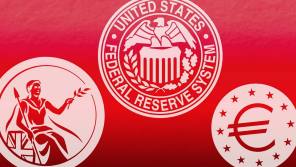

Continued monetary easing by the European Central Bank (ECB), including the decision to expand the bond buying programme to corporate bonds, has resulted in investors being more wary of European fixed income, particularly sovereign bonds.
But the UK’s surprise Brexit vote in June may have started to turn investor sentiment, in spite of the low yields from some areas of the asset class.
Figures from Morningstar’s fund flows report for August shows European investors continuing to move away from equities and towards fixed income assets, with funds recording inflows of approximately €23.6bn (£20.4bn).
Matias Möttölä, senior manager research analyst for Morningstar, says: “Investor interest in fixed income funds in August was such that 71 of Morningstar’s 93 European fixed income categories saw inflows. Inflows have been motivated by a global flight to safety after the UK’s Brexit vote and also by rising expectations of continued low rates and further extraordinary measures by central banks.”
Thomas Samson, high-yield portfolio manager at Muzinich & Co, says the biggest tailwind for European fixed income is the ECB’s purchasing programme, as many people were surprised at how aggressive it has been. “They are buying €400-500m of corporate bonds every day, which has killed volatility in credit spreads in investment grade. This is also likely to dampen volatility on high yield,” he says.
“For investors, it can feel depressing if you think you’re lending to an investment-grade company 10 years out and the yield you are going to get is less than 1 per cent. Our high-yield focus has benefited in terms of trickle-down as investors have reached further down the credit spectrum in the hunt for yield. This has helped high yield, which has had a good year to date.”
Koen Straetmans, senior strategist multi-asset at NN Investment Partners, notes that while the firm has scaled back exposure to European high yield, “on increased near-term uncertainty over the US election, central bank effectiveness and softer macro data”, the team remains overweight European investment grade fixed income.
He explains: “With the key event risks of central bank meetings now behind us, some stabilisation has been seen as a central scenario, characterised by some further muddling through with continued accommodative monetary policy support.”
The manager points out: “The risk-off pattern of early 2016 was characterised by concerns over global growth, China weakness, a further decline in commodity prices and uncertainty over the [US] Fed’s exit strategy following the December 2015 rate hike. It was only with subsequent further monetary policy initiatives and an improvement in global macro and commodity prices that sentiment, performance and flows changed for the better.
“We expect [non-government, fixed income] spread products to remain vulnerable to the above factors, but anticipate the renewed search for yield to take the upper hand into year end.”
But while the European corporate bond market seems to be on an upward trajectory, government bonds are faring less well. David Oliphant, executive director fixed income, at Columbia Threadneedle Investments, points out: “For government bonds, valuations have reached levels that many would have found unimaginable only a few years ago. For example, German 10-year government bond yields are offering investors a negative yield of -14 basis points [as at September 28, 2016]. Though we live in a background of low inflation and growth, market valuations have not only priced in this environment, but priced that this will remain the case. There seems little room for disappointment and little upside to investment.”
On the flip side he notes corporate bonds offer spreads “that are not far removed from the long-term norm or average”. He adds: “Low borrowing costs are prompting a heavy new issuance pipeline in the corporate bond market.”
Iain Stealey, manager of the JP Morgan Global Bond Opportunities fund, agrees that European fixed income has benefited this year from central bank intervention and a global low-growth, low-inflation environment.
“With a bond buying programme worth €80bn a month, the ECB remains the focus for fixed income investors as they are taking out more government bonds from the market than incoming maturities and new issues. This technical has driven yields down, with almost half of eurozone government bonds trading with a negative yield,” he explains. “We expect the ECB to extend the buying programme, which will benefit euro assets. Low inflation, low growth and ECB policy creates a sweet spot for credit markets; we favour European bank capital and high-yield bonds.
“The knock-on effect of low global yields is that the hunt for yield remains and, with both these markets displaying positive yields and spreads, investors will be enticed into the asset classes over the rest of the year.”
Nyree Stewart is features editor at Investment Adviser



